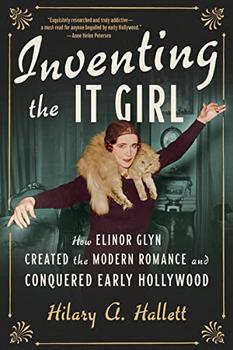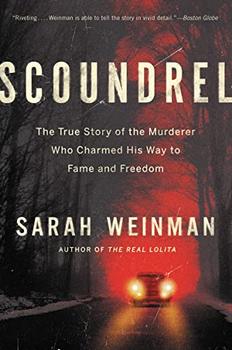Summary | Excerpt | Reviews | Beyond the book | Read-Alikes | Genres & Themes | Author Bio

Terror, Mystery, the Birth of Hollywood, and the Crime of the Century
by Howard Blum Upon reading the first couple pages of American Lightning,
one comes across a list of characters that immediately signals that
Howard Blum's work will read more like a mystery novel, than historical
monograph. Blum states, "I had no ambitions to be a historian….It's a reporter's
story." Really, Blum tries to play both roles. But the challenge with narrative
history is to walk the fine line between entertainment and education, and it is
easy to sense from his identification of American Lightning as a "sort of nonacademic
history" that he is aiming towards the former. While categorized as a
"narrative history," the need to make the book absorbing and compelling, should
not supersede the fact that this story has a concrete setting in the American
historical record. Blum should have noted in the preface, not in the
epilogue, that the quotations are documented and based in factual reality. That
being said, because Blum is experienced in writing concise and intriguing
pieces, he has produced a quick read that will be appreciated by most readers.
Upon reading the first couple pages of American Lightning,
one comes across a list of characters that immediately signals that
Howard Blum's work will read more like a mystery novel, than historical
monograph. Blum states, "I had no ambitions to be a historian….It's a reporter's
story." Really, Blum tries to play both roles. But the challenge with narrative
history is to walk the fine line between entertainment and education, and it is
easy to sense from his identification of American Lightning as a "sort of nonacademic
history" that he is aiming towards the former. While categorized as a
"narrative history," the need to make the book absorbing and compelling, should
not supersede the fact that this story has a concrete setting in the American
historical record. Blum should have noted in the preface, not in the
epilogue, that the quotations are documented and based in factual reality. That
being said, because Blum is experienced in writing concise and intriguing
pieces, he has produced a quick read that will be appreciated by most readers.
 Blum makes a noble attempt to bring this "crime of the century", an event that
has been overshadowed and largely forgotten until now, back into the limelight.
Fortunately for him, his cast of characters is an all-star lineup and the
intersection of detective Williams Burns, lawyer Clarence Darrow, and filmmaker
D.W. Griffith in his plot seems effortless – making his depiction of this
historical event all the more captivating. It is easy to agree with fellow
reviewers that the book is entertaining.
Blum makes a noble attempt to bring this "crime of the century", an event that
has been overshadowed and largely forgotten until now, back into the limelight.
Fortunately for him, his cast of characters is an all-star lineup and the
intersection of detective Williams Burns, lawyer Clarence Darrow, and filmmaker
D.W. Griffith in his plot seems effortless – making his depiction of this
historical event all the more captivating. It is easy to agree with fellow
reviewers that the book is entertaining.
 Although one reviewer equated Blum's approach to that of Truman Capote, the
comparison between American Lightning and In Cold Blood is not
completely plausible. Where Capote succeeded at captivating his audience by
portraying the villains and their victims alike, Blum fails to take that route
and instead takes the easier road by only dissecting the main characters - Burns,
Darrow and Griffith. This is not to say that American Lightning is not
interesting and a narrative page-turner, but unlike Capote, Blum does not turn
over every stone – only the biggest and shiniest. In essence, we only get one
side of the story. True, the events took place over a hundred years ago so Blum
could not interview any of those involved, but with the vast amount of
documentation at his disposal, he might have told us a bit more about those
individuals time has overlooked.
Although one reviewer equated Blum's approach to that of Truman Capote, the
comparison between American Lightning and In Cold Blood is not
completely plausible. Where Capote succeeded at captivating his audience by
portraying the villains and their victims alike, Blum fails to take that route
and instead takes the easier road by only dissecting the main characters - Burns,
Darrow and Griffith. This is not to say that American Lightning is not
interesting and a narrative page-turner, but unlike Capote, Blum does not turn
over every stone – only the biggest and shiniest. In essence, we only get one
side of the story. True, the events took place over a hundred years ago so Blum
could not interview any of those involved, but with the vast amount of
documentation at his disposal, he might have told us a bit more about those
individuals time has overlooked.
 Perhaps the one character who deserved much more attention than he received in
this book was that of Harrison Gray Otis, owner of the Los Angeles Times.
The "General," as he was referred to, comes off like the typical robber baron of
the times, out for the money with little or no concern for the working class and
animatedly anti-union. Yet, for even the most trained American historian, his
name does not ring a bell nor does he rank with that of Vanderbilt, Morgan, and
Rockfeller. If this man was really the face behind labor hostilities, Blum
needed to put him under the scope more than he did. The one aspect of Otis's
determination that intrigued me was his obsession to gain power which extended
to controlling a necessity of life: water. Blum briefly skims the surface of how
water in the arid American West could have been as much of motive for terror and
domination in the early 20th century as oil has become in more recent
years. Unfortunately, that part of the story gets pushed aside early on and is
never fully reintegrated. For a much more thorough account on this topic, Donald
Worster's Rivers of Empire investigates how water and aridity played the
most significant role in developing the wild West from the time of occupation by
Native Americans, up to the lingering affect of the National Reclamation Law,
until the 1980s.
Perhaps the one character who deserved much more attention than he received in
this book was that of Harrison Gray Otis, owner of the Los Angeles Times.
The "General," as he was referred to, comes off like the typical robber baron of
the times, out for the money with little or no concern for the working class and
animatedly anti-union. Yet, for even the most trained American historian, his
name does not ring a bell nor does he rank with that of Vanderbilt, Morgan, and
Rockfeller. If this man was really the face behind labor hostilities, Blum
needed to put him under the scope more than he did. The one aspect of Otis's
determination that intrigued me was his obsession to gain power which extended
to controlling a necessity of life: water. Blum briefly skims the surface of how
water in the arid American West could have been as much of motive for terror and
domination in the early 20th century as oil has become in more recent
years. Unfortunately, that part of the story gets pushed aside early on and is
never fully reintegrated. For a much more thorough account on this topic, Donald
Worster's Rivers of Empire investigates how water and aridity played the
most significant role in developing the wild West from the time of occupation by
Native Americans, up to the lingering affect of the National Reclamation Law,
until the 1980s.
In the end, most readers will appreciate American Lightning for bringing this forgotten
part of history to the surface and turning it into an enthralling story; and
scholars more versed in American history will gain a better perspective of how
this event affected the choices Burns, Darrow, and Griffith made later in life.
Out of a scale of 5, I would give it a 4.5.
Top: William J. Burns. 2nd: Clarence Darrow. 3rd: D.W. Griffith. Bottom: Harrison Gray Otis.
Right: The remains of the Los Angeles Times Building (1910)
![]() This review was originally published in The BookBrowse Review in October 2008, and has been updated for the
November 2009 edition.
Click here to go to this issue.
This review was originally published in The BookBrowse Review in October 2008, and has been updated for the
November 2009 edition.
Click here to go to this issue.

If you liked American Lightning, try these:

by Hilary A. Hallett
Published 2024
The modern romance novel is elevated to a subject of serious study in this addictively readable biography of pioneering celebrity author Elinor Glyn.

by Sarah Weinman
Published 2023
From the author of The Real Lolita and editor of Unspeakable Acts, the astonishing story of a murderer who conned the people around him - including conservative thinker William F. Buckley - into helping set him free
Your guide toexceptional books
BookBrowse seeks out and recommends the best in contemporary fiction and nonfiction—books that not only engage and entertain but also deepen our understanding of ourselves and the world around us.